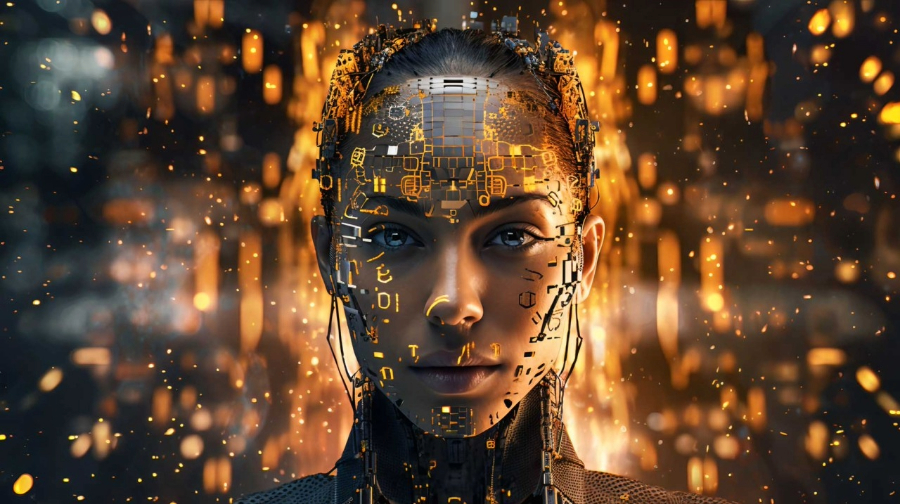Generative AI and its Impact on Security
Many aspects of human existence are being revolutionized as a result of the capacity of generative artificial intelligence to generate original content, which can include text, images, and even audio. It has a wide variety of applications, which are constantly developing, ranging from artistic production to targeted marketing strategies. However, this powerful instrument makes the foundation of security more difficult to maintain than it would otherwise be. In this article, we will investigate the intricate relationship that exists between generative artificial intelligence and security, focusing on both the positive and negative aspects of this technology.
Benefits of Generative AI in Security
- Enhanced Threat Detection: By analyzing large volumes of data, generative models are able to identify patterns and abnormalities that indicate malware infiltration, phishing scams, or cyberattacks. Security experts can use this to keep ahead of emerging risks and take preventative action.
- Vulnerability discovery done automatically: Artificial intelligence (AI) may mimic actual attack scenarios to find security flaws in networks and systems that could have been undetected. This can cut down on the amount of time and energy needed to handle vulnerabilities.
- Personalized Security Solutions: By using particular risk profiles and usage patterns, generative AI is able to customize security measures for individual users and devices. This customized strategy may prove to be more successful than universally applicable ones.
- Improved Deception Techniques: Artificial intelligence-generated scams, like spoof websites or social media accounts, can be used to attract attackers and obtain important information about their strategies and techniques. Security teams may use this to create countermeasures that are more powerful.
Risks Associated with Generative AI
- Deepfakes and Disinformation: It is possible to propagate false information, harm people’s reputations, and influence public opinion by using the ability to produce convincing and realistic fake audio and video. This is a serious threat to social stability, elections, and national security.
- Social Engineering Attacks: AI-driven chatbots can pose as real individuals and trick users into disclosing personal information or opening nefarious links. In addition to other cybercrimes, this may result in financial loss and identity theft.
- Weaponization of AI: By utilizing generative AI, malevolent actors can produce automated attacks that are difficult to identify and prevent. This can involve creating phishing emails, creating malware that avoids detection by conventional means, or even launching coordinated attacks on several systems.
- Erosion of Trust: As AI-generated content becomes more complex, it may be harder to tell what is real information and what is fake. This may damage people’s faith in authorities, the media, and even close friends and family.
Navigating the Generative AI Landscape
Although generative AI carries some serious and worrisome hazards, it’s crucial to keep in mind that technology is neither intrinsically good nor harmful. It’s our duty to see to it that it is created and applied morally and sensibly.
The following are crucial actions to reduce the risks:
Transparency and Traceability: Implement systems to recognize and monitor content produced by AI, indicating its creator and intended use.
Regulation and Governance: Establish guidelines and rules to direct the creation and application of generative AI, guaranteeing that it complies with moral and legal requirements.
Education and Awareness: Inform people and institutions about the possible dangers of generative artificial intelligence (AI) as well as how to spot altered information and remain ahead of it.
Cooperation and Partnerships: To develop responsible AI solutions and reduce possible hazards, promote cooperation between researchers, policymakers, and industry participants.
How to protect yourself?
You must take a two-pronged strategy. First of all, avoid falling into the deep-fake trap. Recognize that sensational-looking content before sharing it and responding to it; read the fine print and make an effort to double-check the facts. Secondly, take extra care with your online presence, particularly with regard to the visual elements (photos and videos), for your personal protection. Make use of two-factor authentication, create secure passwords, and maintain good online hygiene.
Powerful technology like Generative AI has the potential to completely transform many facets of our lives, including security. However, in order to make sure that this technology benefits humanity, it is imperative that the hazards involved are recognized and taken seriously. We can negotiate the challenging terrain of Generative AI and realize its promise for a more secure and safe future by promoting moral development, strong governance, and public awareness
Source

